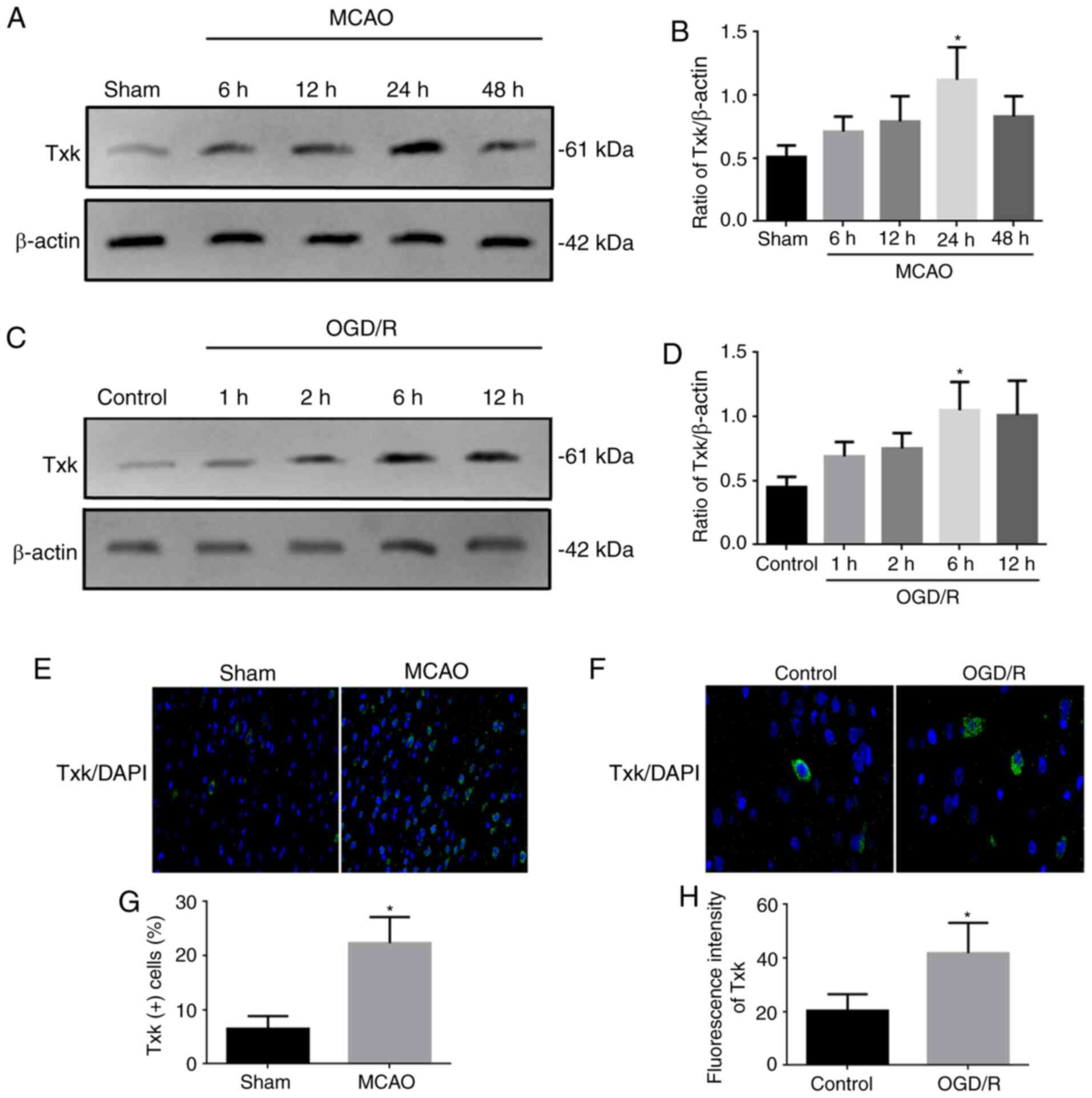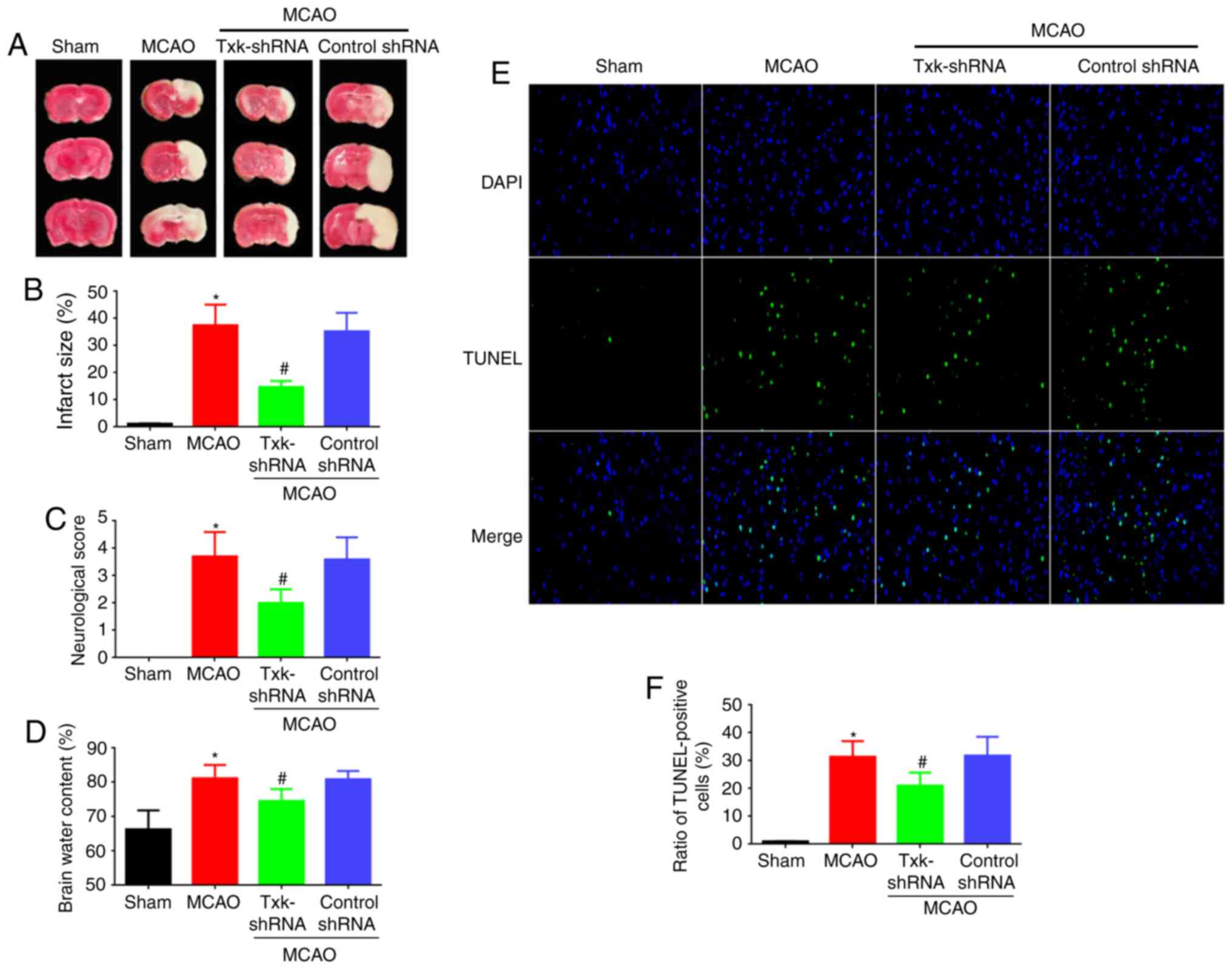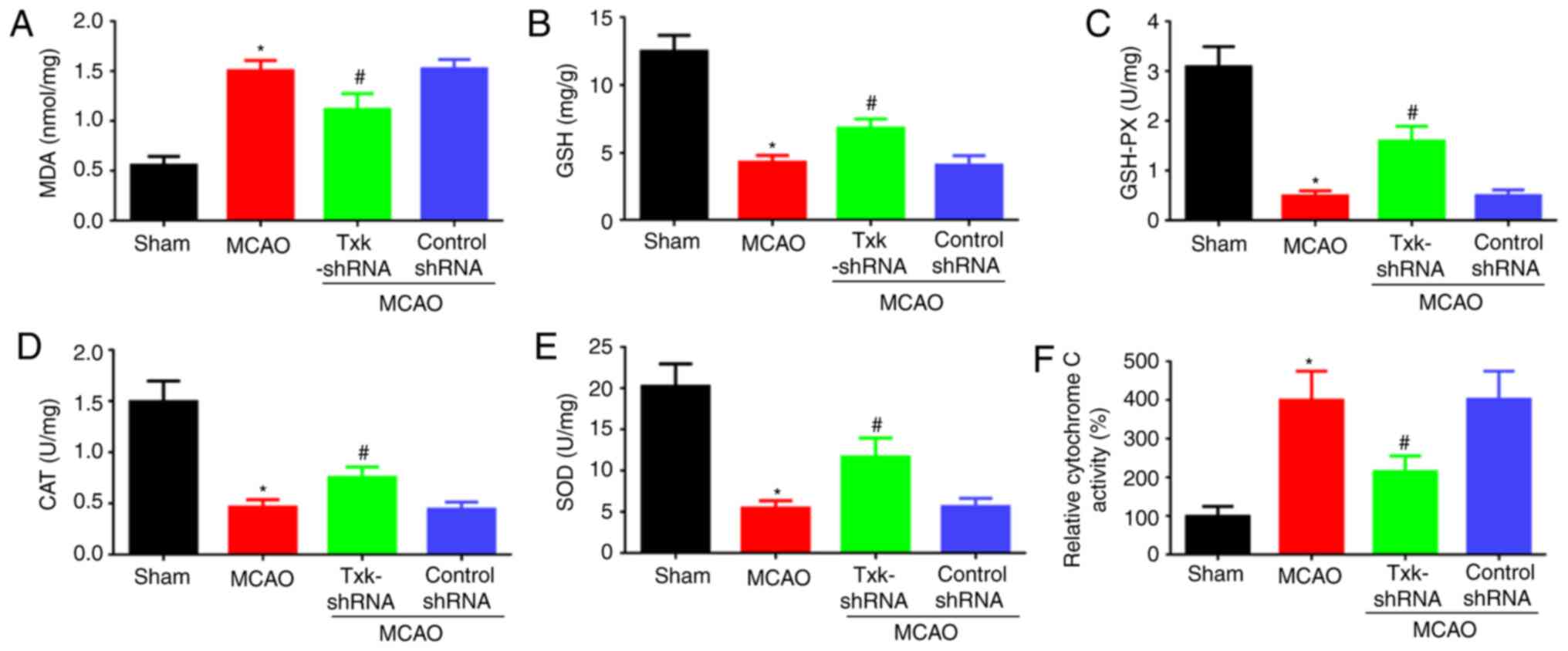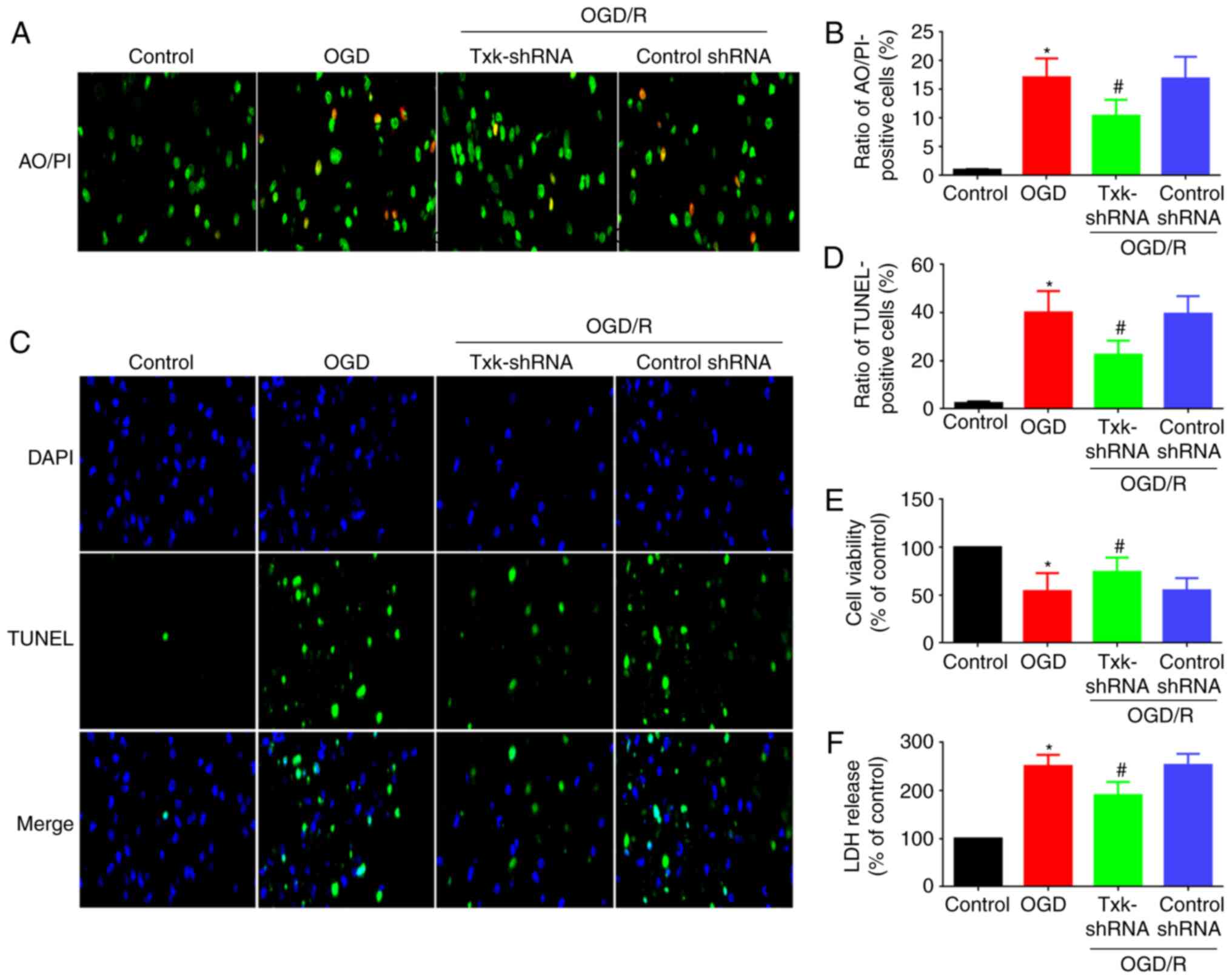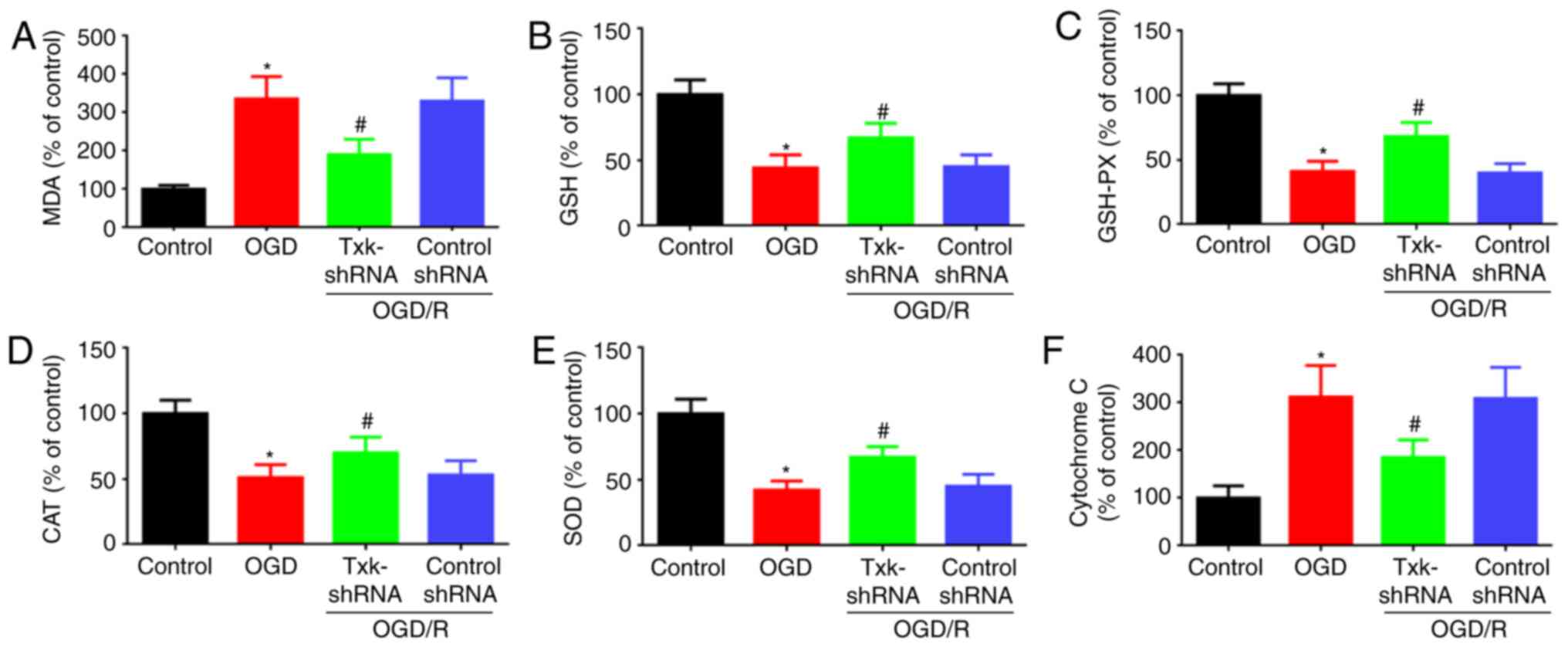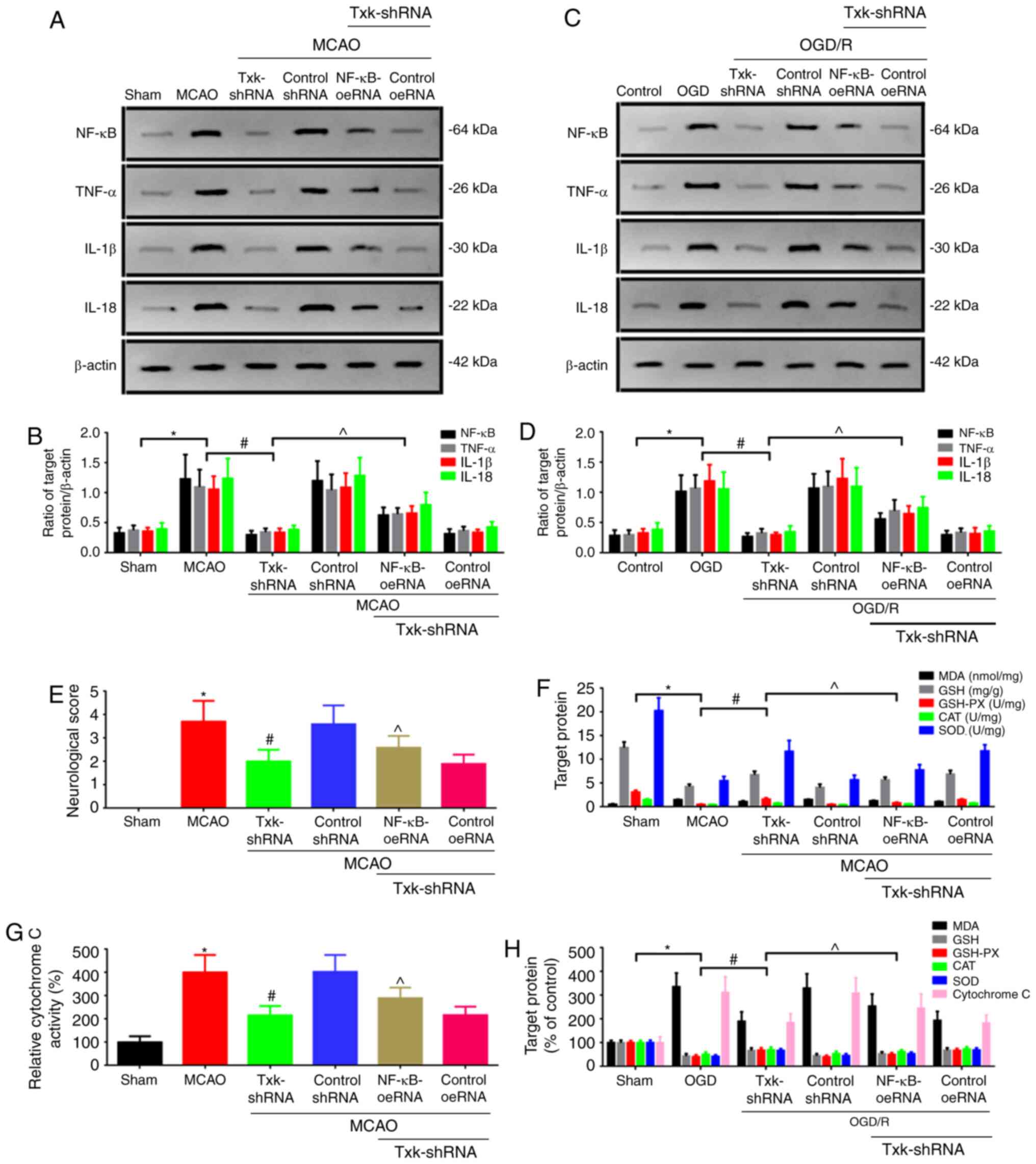|
1
|
Kim JH, Nagy Á, Putzu A, Belletti A,
Biondi-Zoccai G, Likhvantsev VV, Yavorovskiy AG and Landoni G:
Therapeutic hypothermia in Critically Ill patients: A systematic
review and meta-analysis of high quality randomized trials. Crit
Care Med. 48:1047–1054. 2020.PubMed/NCBI
|
|
2
|
Wang J, Mao J, Wang R, Li S, Wu B and Yuan
Y: Kaempferol protects against cerebral ischemia reperfusion injury
through intervening oxidative and inflammatory stress induced
apoptosis. Front Pharmacol. 11:4242020. View Article : Google Scholar : PubMed/NCBI
|
|
3
|
Boese AC, Lee JP and Hamblin MH:
Neurovascular protection by peroxisome proliferator-activated
receptor alpha in ischemic stroke. Exp Neurol. 331:1133232020.
View Article : Google Scholar : PubMed/NCBI
|
|
4
|
Ren Z, Zhang R, Li Y, Li Y, Yang Z and
Yang H: Ferulic acid exerts neuroprotective effects against
cerebral ischemia/reperfusion-induced injury via antioxidant and
anti-apoptotic mechanisms in vitro and in vivo. Int J
Mol Med. 40:1444–1456. 2017. View Article : Google Scholar : PubMed/NCBI
|
|
5
|
Granger DN and Kvietys PR: Reperfusion
injury and reactive oxygen species: The evolution of a concept.
Redox Biol. 6:524–551. 2015. View Article : Google Scholar : PubMed/NCBI
|
|
6
|
Espinos C, Galindo MI, García-Gimeno MA,
Ibáñez-Cabellos JS, Martínez-Rubio D, Millán JM, Rodrigo R, Sanz P,
Seco-Cervera M, Sevilla T, et al: Oxidative stress, a crossroad
between rare diseases and neurodegeneration. Antioxidants (Basel).
9:3132020. View Article : Google Scholar : PubMed/NCBI
|
|
7
|
Takesono A, Finkelstein L and Schwartzberg
P: Beyond calcium: Mew signaling pathways for Tec family kinases. J
Cell Sci. 115:3039–3048. 2002. View Article : Google Scholar : PubMed/NCBI
|
|
8
|
Freudenberg J, Lee AT, Siminovitch KA,
Amos CI, Ballard D, Li W and Gregersen PK: Locus category based
analysis of a large genome-wide association study of rheumatoid
arthritis. Hum Mol Genet. 19:3863–3872. 2010. View Article : Google Scholar : PubMed/NCBI
|
|
9
|
Mihara S and Suzuki N: Role of Txk, a
member of the Tec family of tyrosine kinases, in
immune-inflammatory diseases. Int Rev Immunol. 26:333–348. 2007.
View Article : Google Scholar : PubMed/NCBI
|
|
10
|
Zhang Q, Lenardo MJ and Baltimore D: 30
years of NF-κB: A blossoming of relevance to human pathobiology.
Cell. 168:37–57. 2017. View Article : Google Scholar : PubMed/NCBI
|
|
11
|
Ali A, Shah FA, Zeb A, Malik I, Alvi AM,
Alkury LT, Rashid S, Hussain I, Ullah N, Khan AU, et al: NF-κB
inhibitors attenuate MCAO induced neurodegeneration and oxidative
stress-a reprofiling approach. Front Mol Neurosci. 13:332020.
View Article : Google Scholar : PubMed/NCBI
|
|
12
|
Bayne K: Revised guide for the care and
use of laboratory animals available. American Physiological
Society. Physiologist. 39:199, 208–211. 1996.PubMed/NCBI
|
|
13
|
He Q, Li Z, Wang Y, Hou Y, Li L and Zhao
J: Resveratrol alleviates cerebral ischemia/reperfusion injury in
rats by inhibiting NLRP3 inflammasome activation through
Sirt1-dependent autophagy induction. Int Immunopharmacol.
50:208–215. 2017. View Article : Google Scholar : PubMed/NCBI
|
|
14
|
Kyha D: Williams. Laboratory Animal
Welfare. Quarterly Rev Biol. 92:802014.
|
|
15
|
Xu SY, Wu YM, Ji Z, Gao XY and Pan SY: A
modified technique for culturing primary fetal rat cortical
neurons. J Biomed Biotechnol. 2012:8039302012. View Article : Google Scholar : PubMed/NCBI
|
|
16
|
Sun B, Ou H, Ren F, Huan Y, Zhong T, Gao M
and Cai H: Propofol inhibited autophagy through
Ca2+)/CaMKKβ/AMPK/mTOR pathway in OGD/R-induced neuron
injury. Mol Med. 24:582018. View Article : Google Scholar : PubMed/NCBI
|
|
17
|
Xia P, Pan Y, Zhang F, Wang N, Wang E, Guo
Q and Ye Z: Pioglitazone confers neuroprotection against
ischemia-induced pyroptosis due to its inhibitory effects on
HMGB-1/RAGE and Rac1/ROS pathway by activating PPAR. Cell Physiol
Biochem. 45:2351–2368. 2018. View Article : Google Scholar : PubMed/NCBI
|
|
18
|
Wang S, Zhou Y, Yang B, Li L, Yu S, Chen
Y, Zhu J and Zhao Y: C1q/tumor necrosis factor-related protein-3
attenuates brain injury after intracerebral hemorrhage via
AMPK-dependent pathway in rat. Front Cell Neurosci. 10:2372016.
View Article : Google Scholar : PubMed/NCBI
|
|
19
|
Xia P, Zhang F, Yuan Y, Chen C, Huang Y,
Li L, Wang E, Guo Q and Ye Z: ALDH 2 conferred neuroprotection on
cerebral ischemic injury by alleviating mitochondria-related
apoptosis through JNK/caspase-3 signing pathway. Int J Biol Sci.
16:1303–1323. 2020. View Article : Google Scholar : PubMed/NCBI
|
|
20
|
Ye Z, Li Q, Guo Q, Xiong Y, Guo D, Yang H
and Shu Y: Ketamine induces hippocampal apoptosis through a
mechanism associated with the caspase-1 dependent pyroptosis.
Neuropharmacology. 128:63–75. 2018. View Article : Google Scholar : PubMed/NCBI
|
|
21
|
Wang P, Zhang J, Guo F, Wang S, Zhang Y,
Li D, Xu H and Yang H: Lipopolysaccharide worsens the prognosis of
experimental cerebral ischemia via interferon gamma-induced protein
10 recruit in the acute stage. BMC Neurosci. 20:642019. View Article : Google Scholar : PubMed/NCBI
|
|
22
|
Jiang J, Dai J and Cui H: Vitexin reverses
the autophagy dysfunction to attenuate MCAO-induced cerebral
ischemic stroke via mTOR/Ulk1 pathway. Biomed Pharmacother.
99:583–590. 2018. View Article : Google Scholar : PubMed/NCBI
|
|
23
|
Bock FJ and Tait SWG: Mitochondria as
multifaceted regulators of cell death. Nat Rev Mol Cell Biol.
21:85–100. 2020. View Article : Google Scholar : PubMed/NCBI
|
|
24
|
Deng Y, Chen D, Wang L, Gao F, Jin B, Lv
H, Zhang G, Sun X, Liu L, Mo D, et al: Silencing of long noncoding
RNA Nespas aggravates microglial cell death and neuroinflammation
in ischemic stroke. Stroke. 50:1850–1858. 2019. View Article : Google Scholar : PubMed/NCBI
|
|
25
|
Shah FA, Li T, Kury LTA, Zeb A, Khatoon S,
Liu G, Yang X, Liu F, Yao H, Khan AU, et al: Pathological
comparisons of the hippocampal changes in the transient and
permanent middle cerebral artery occlusion rat models. Front
Neurol. 10:11782019. View Article : Google Scholar : PubMed/NCBI
|
|
26
|
Jia Y, Cui R, Wang C, Feng Y, Li Z, Tong
Y, Qu K, Liu C and Zhang J: Metformin protects against intestinal
ischemia-reperfusion injury and cell pyroptosis via
TXNIP-NLRP3-GSDMD pathway. Redox Biol. 32:1015342020. View Article : Google Scholar : PubMed/NCBI
|
|
27
|
Lewerenz J, Ates G, Methner A, Conrad M
and Maher P: Oxytosis/Ferroptosis-(Re-) emerging roles for
oxidative stress-dependent non-apoptotic cell death in diseases of
the central nervous system. Front Neurosci. 12:2142018. View Article : Google Scholar : PubMed/NCBI
|
|
28
|
Masaldan S, Bush AI, Devos D, Rolland AS
and Moreau C: Striking while the iron is hot: Iron metabolism and
ferroptosis in neurodegeneration. Free Radic Biol Med. 133:221–233.
2019. View Article : Google Scholar : PubMed/NCBI
|
|
29
|
Li Z, Yulei J, Yaqing J, Jinmin Z, Xinyong
L, Jing G and Min L: Protective effects of tetramethylpyrazine
analogue Z-11 on cerebral ischemia reperfusion injury. Eur J
Pharmacol. 844:156–164. 2019. View Article : Google Scholar : PubMed/NCBI
|
|
30
|
Takeba Y, Nagafuchi H, Takeno M,
Kashiwakura J and Suzuki N: Txk, a member of nonreceptor tyrosine
kinase of Tec family, acts as a Th1 cell-specific transcription
factor and regulates IFN-gamma gene transcription. J Immunol.
168:2365–2370. 2002. View Article : Google Scholar : PubMed/NCBI
|
|
31
|
Zhang Y, Wester L, He J, Geiger T,
Moerkens M, Siddappa R, Helmijr JA, Timmermans MM, Look MP, van
Deurzen CHM, et al: IGF1R signaling drives antiestrogen resistance
through PAK2/PIX activation in luminal breast cancer. Oncogene.
37:1869–1884. 2018. View Article : Google Scholar : PubMed/NCBI
|
|
32
|
Liu J, Chen J, Ehrlich S, Walton E, White
T, Perrone-Bizzozero N, Bustillo J, Turner JA and Calhoun VD:
Methylation patterns in whole blood correlate with symptoms in
schizophrenia patients. Schizophr Bull. 40:769–776. 2014.
View Article : Google Scholar : PubMed/NCBI
|
|
33
|
Iwai LK, Benoist C, Mathis D and White FM:
Quantitative phosphoproteomic analysis of T cell receptor signaling
in diabetes prone and resistant mice. J Proteome Res. 9:3135–3145.
2010. View Article : Google Scholar : PubMed/NCBI
|
|
34
|
Haire RN, Ohta Y, Lewis JE, Fu SM, Kroisel
P and Litman GW: TXK, a novel human tyrosine kinase expressed in T
cells shares sequence identity with Tec family kinases and maps to
4p12. Hum Mol Genet. 3:897–901. 1994. View Article : Google Scholar : PubMed/NCBI
|
|
35
|
Shi SS, Yang WZ, Chen Y, Chen JP and Tu
XK: Propofol reduces inflammatory reaction and ischemic brain
damage in cerebral ischemia in rats. Neurochem Res. 39:793–799.
2014. View Article : Google Scholar : PubMed/NCBI
|
|
36
|
Sivandzade F, Prasad S, Bhalerao A and
Cucullo L: NRF2 and NF-B interplay in cerebrovascular and
neurodegenerative disorders: Molecular mechanisms and possible
therapeutic approaches. Redox Biol. 21:1010592019. View Article : Google Scholar : PubMed/NCBI
|















